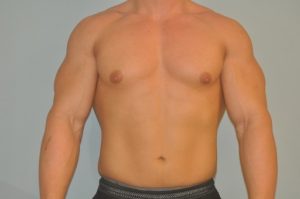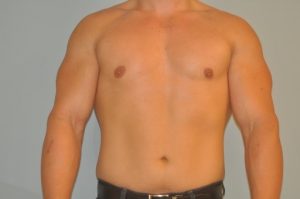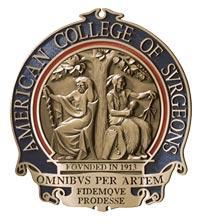Gynecomastia
Male Breast Anatomy:
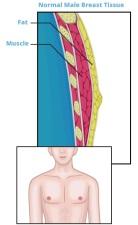 Normally, male breast tissue is often detectable only under microscopic magnification and consists of a flattened disc-shaped body of grayish fibroglandular subareolar tissue.
Normally, male breast tissue is often detectable only under microscopic magnification and consists of a flattened disc-shaped body of grayish fibroglandular subareolar tissue.
The gland is a vestigial organ consisting of 15-25 short branched, non-functioning milk ducts.
Breast tissue is not normally palpable or visible
Exceptions to this include:
- Neonatal Gynecomastia – a normal, temporary enlargement of the infant male breast that generally resolves by 4-6 weeks following birth
- ‘Physiologic’ Pubertal Gynecomastia – a normal temporary enlargement of the adolescent breast which generally resolves within 2 years
Male Breast Typically Lacks:
- Lobular Formations (Lobules) – milk producing glands found in the female breast, which develop as a result of progesterone stimulus
- Cooper’s Ligaments – give support to female breast tissue
Mammogram of Male Breast
Minimal, barely detectable amount of retro-areolar connective tissue
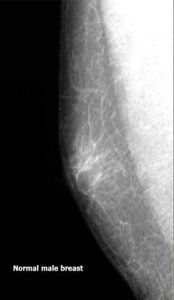
Normal Growth of Male Breast:
 Onset at puberty
Onset at puberty- Tender retro-areolar nodule
- Spontaneous resolution in 6-24 months
Abnormally Enlarged Male Breast
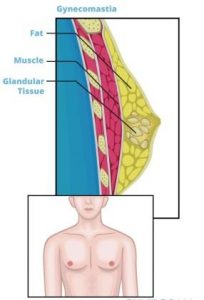
During their lifetime, up to two thirds of the men in the U.S. will be afflicted with abnormal breast enlargement of one or both breasts. Dr. Pratt has a special interest in treating gynecomastia patients and performs male breast reduction procedures on a weekly basis in the greater Seattle area.
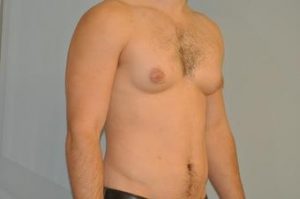
Breast enlargement in adolescents and adult men can be a significant cause for embarrassment and shame, leading to an altered lifestyle based around avoidance of activities that require exposure of the chest such as going to the pool or beach, team sports and intimacy with loved ones.
The good news for gynecomastia patients is that there are now surgical treatments available that can address the various problems seen with this condition, including “puffy nipples”, subareolar “gland enlargement”, diffuse fatty breast enlargement affecting the whole chest, excess breast skin, or a prominent “inframammary crease”.
Male Breast Enlargement Terminology
In this website, we have chosen to keep our terminology simple and straightforward., we have chosen to use the term ‘gynecomastia’ to describe all types of male breast enlargement, including diffuse fatty enlargement, subareolar rubbery gland, as well as so-called ‘puffy nipples’. In order to avoid confusion, specific attributes are referred to in descriptive terms i.e. “diffuse fatty” enlargement instead of ‘pseudogynecomastia’.
Types of Male Breast Enlargement
The vast majority of male breast reduction patients seen by Dr. Pratt will fit one of these 4 descriptions:
1. Gynecomastia (aka True Gynecomastia)— the definition used by most plastic surgeons, a firm, rubbery disc-like fullness centered beneath the areola, measuring more than 2 cm diameter. This type of enlargement is more commonly seen in body builders on testosterone supplements and extremely lean individuals —Only about 10% of our patients fit this description.
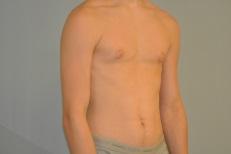
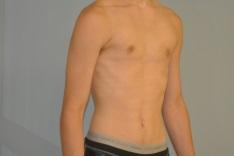
2. Diffuse Fatty Enlargement (aka. Pseudogynecomastia or Lipomastia) — a term used by some to describe generalized fatty enlargement of the male breast with no rubbery disc or gristly tissue beneath the areola—10% of our patients. This type is more often seen in overweight patients, but not always.
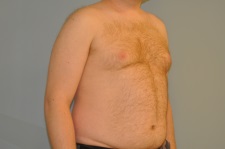

3. Mixed Type— a combination of both of the above—diffuse fatty enlargement of the breast with a subareolar fibrous component which is more gristle than rubbery and which may be difficult for patients to detect on self-examination prior to treatment; this type represents about 80% of the patients seen by Dr. Pratt.
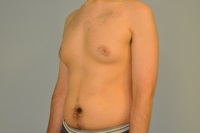
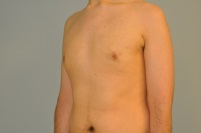
The fibrous tissue in this type can be found either directly under the areola or sometimes within a ‘teardrop’ distribution centered under the areola, with the tail of the tear drop pointing out towards the armpit. In some patients with diffuse fatty breast enlargement, the fibrous portion is barely detectable.

However, in the operating room after liposuction has been completed, this localized collection of soft tissue with the texture of ‘gristle’. Most of these patients have a normal or slightly elevated BMI (Body Mass Index), an otherwise normal, non-feminized body habitus and normal libido.
- ‘Puffy Nipples’ – usually involves enlargement of the areola in both width and projection, and is sometimes referred to as having an “over-stuffed” appearance. The areolar skin is often tight, smooth, shiny and lighter in color than normal. This condition can occur in isolation without any other abnormal involvement of the chest, but is more commonly is seen as a component of the other types of male breast enlargement described above.
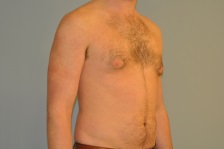
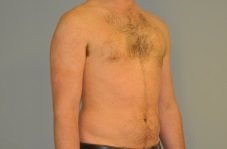
Example of Isolated ‘Puffy Nipples’
Other Gynecomastia Variations
Enlarged, “Puffy” Nipples with a mild amount of diffuse breast enlargement
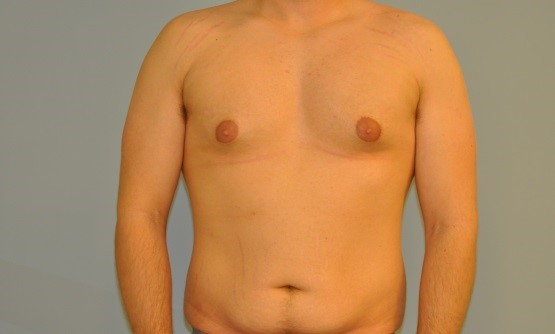

Subareolar Fibrous or Rubbery Glandular Tissue aka the “Gland” surrounded by diffuse breast enlargement
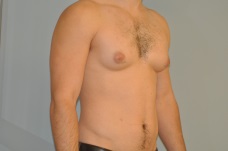
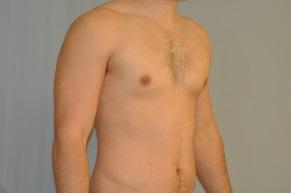
Inframammary Crease that separates the breast from the lower anterior chest
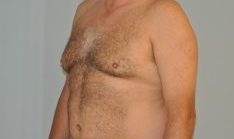
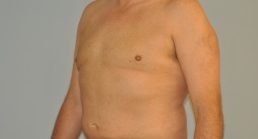
Redundant Skin of an enlarged breast
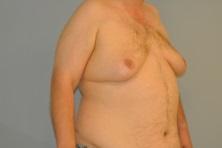
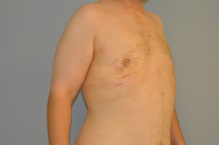
Low Lying Nipple areolar complex
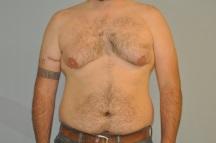
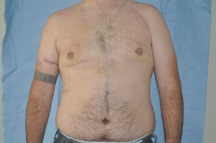
Lateral Chest Fullness and Excess Skin (aka breast roll)
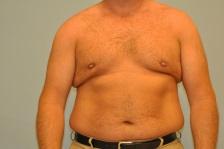
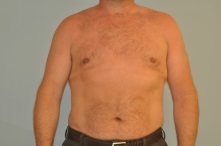
Enlarged Areolas
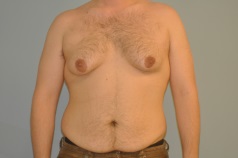
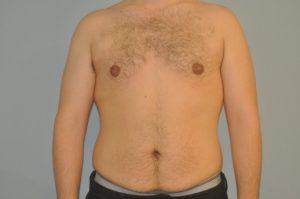
‘Body Builder Associated’ ‘True’ Gynecomastia
